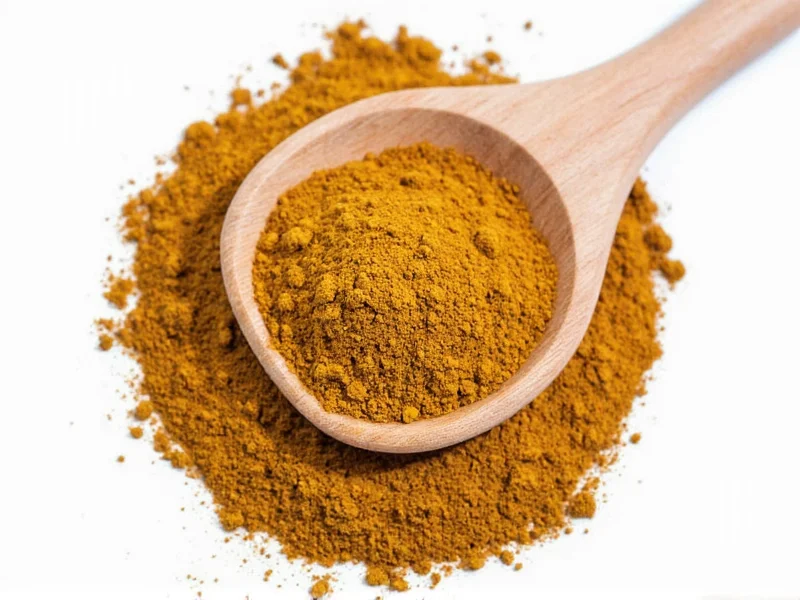Understanding spice longevity past the best by date is essential for both kitchen efficiency and culinary excellence. Unlike perishable foods, spices don't become unsafe to eat after their labeled date, but their quality does diminish. This comprehensive guide provides evidence-based information about spice shelf life, helping you maximize flavor while minimizing waste.
Decoding Spice Date Labels
The "best by," "best before," or "use by" dates on spice containers indicate peak quality rather than safety expiration. These dates represent when manufacturers guarantee optimal flavor and aroma—not when spices become dangerous to consume. The Food and Drug Administration (FDA) doesn't require expiration dates on spice products because they're considered shelf-stable.
Factors Influencing Spice Longevity
Several elements determine how long spices maintain their quality after the best by date:
- Form: Whole spices (like peppercorns or cinnamon sticks) retain freshness significantly longer than ground versions
- Storage conditions: Exposure to heat, light, and moisture accelerates flavor degradation
- Container type: Airtight containers preserve potency better than original packaging
- Spice composition: Oily spices (like paprika) degrade faster than dry varieties
Comprehensive Spice Shelf Life Guide
While individual results may vary based on storage conditions, these timeframes represent typical longevity for spices past their best by date:
| Spice Type | Best Quality Period After Best By Date | Maximum Usable Period | Quality Indicators |
|---|---|---|---|
| Whole spices (peppercorns, cinnamon sticks, cloves) | 3-4 years | Up to 5 years | Maintains strong aroma when crushed |
| Ground spices (cumin, coriander, chili powder) | 2-3 years | Up to 4 years | Vibrant color, potent scent |
| Dried herbs (oregano, thyme, rosemary) | 1-2 years | Up to 3 years | Green color, distinct herbal fragrance |
| Spice blends (curry powder, taco seasoning) | 1-2 years | Up to 3 years | Consistent flavor profile |
| Red spices (paprika, chili powder) | 1-2 years | Up to 2.5 years | Bright red color, no fading |
How to Test Spice Freshness
Before discarding older spices, perform these simple freshness tests:
- The smell test: Rub a small amount between your palms and inhale deeply. Fresh spices should produce an immediate, strong aroma. If you need to sniff repeatedly to detect any scent, potency has significantly diminished.
- The color check: Compare against a newer version if available. Faded color—particularly in red spices like paprika—indicates age-related degradation.
- The taste test: For ground spices, place a tiny amount on your tongue. Fresh spices deliver immediate flavor impact. Old spices taste flat or barely noticeable.
- The pinch test: Whole spices should feel slightly oily when crushed. Dry, brittle textures suggest extended storage.
Optimal Spice Storage Techniques
Proper storage dramatically extends spice usability beyond best by dates. Follow these evidence-based storage recommendations:
- Transfer spices to airtight glass or metal containers immediately after purchase
- Store in a cool, dark cabinet away from the stove, oven, or dishwasher
- Maintain consistent temperatures below 70°F (21°C)
- Avoid refrigeration, which introduces moisture that degrades quality
- Keep containers tightly sealed after each use
- Buy whole spices when possible and grind them as needed
Research from the National Center for Home Food Preservation confirms that spices stored in optimal conditions retain up to 90% of their volatile compounds—the elements responsible for flavor and aroma—for significantly longer periods than those stored improperly.
When to Discard Spices
While spices rarely pose safety risks, certain conditions warrant disposal:
- Visible mold growth (extremely rare but possible with moisture exposure)
- Musty or off odors indicating moisture contamination
- Clumping that doesn't break apart easily (sign of moisture)
- Spices stored in humid environments for extended periods
For most home cooks, flavor degradation rather than safety concerns determines when to replace spices. If your curry powder no longer delivers vibrant flavor after proper storage for three years past its best by date, it's time for replacement—even if technically still safe.
Maximizing Spice Value
Understanding how long spices last after best by date helps reduce kitchen waste while maintaining culinary quality. Rather than strictly following package dates, rely on sensory evaluation and proper storage practices. Consider purchasing smaller quantities of expensive spices you use infrequently, and buy whole spices when possible for extended freshness.
Professional chefs often maintain spice inventories with purchase dates to track freshness. Implementing a similar system at home—simply writing the purchase date on containers—provides valuable reference for determining when spices have passed their prime quality period.
Do spices become unsafe to eat after the best by date?
No, spices don't become unsafe after best by dates. They gradually lose flavor and potency but remain safe to consume indefinitely when stored properly. The primary concern is diminished culinary quality rather than food safety risks.
How can I extend the shelf life of my spices beyond the best by date?
Transfer spices to airtight glass or metal containers, store in a cool, dark cabinet away from heat sources, and avoid exposure to moisture. Whole spices stored this way can maintain quality for up to 5 years past their best by date, while ground spices typically last 3-4 years.
Why do whole spices last longer than ground spices?
Whole spices have less surface area exposed to air, light, and moisture. The protective outer layer helps preserve volatile oils responsible for flavor and aroma. Once ground, these compounds evaporate more quickly, accelerating flavor loss.
Can I revive old spices that have lost their flavor?
Unfortunately, you cannot restore lost potency to old spices. The volatile compounds that provide flavor and aroma evaporate over time and cannot be regenerated. Your best option is to replace significantly aged spices or use larger quantities in recipes where appropriate.
Do organic spices have different shelf life than conventional spices?
No, organic certification doesn't affect spice longevity. Shelf life depends primarily on storage conditions and whether spices are whole or ground. Both organic and conventionally produced spices follow the same degradation patterns when stored identically.











 浙公网安备
33010002000092号
浙公网安备
33010002000092号 浙B2-20120091-4
浙B2-20120091-4